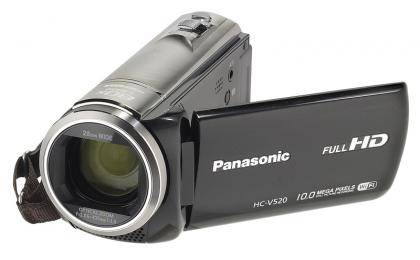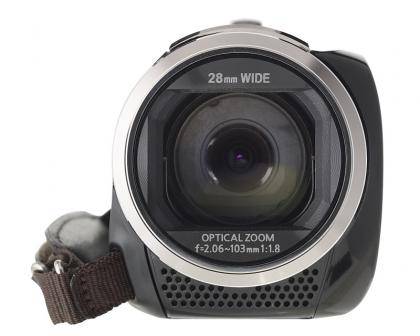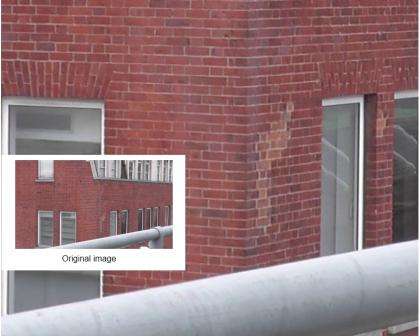Panasonic is well known for its award-winning 3MOS camcorders, such as the Best Buy-winning HC-X920, which uses three separate sensors to capture fantastic-looking footage, but Panasonic has always provided excellent entry level camcorders too, the latest of which is the Panasonic HC-V520 - an evolution of last year's Panasonic HC-V500 .

It's a compact camcorder with a single 1/5.8in BSI MOS sensor, a 50x optical zoom, Panasonic’s excellent Hybrid Optical Image Stabilisation system and a built-in 802.11n Wi-Fi adaptor that lets you stream video to your TV or PC among other things. The HC-V520 is also capable of capturing Full HD footage at a respectable maximum bitrate of 28Mbit/s in the AVCHD 2.0 format and recording audio in two-channel Dolby Digital Stereo.
Although the sensor size remains the same, the HC-V520’s 50x optical zoom is longer than the HC-V500’s 38x optical zoom. The built-in Wi-Fi adaptor is certainly new. Otherwise, the HC-V520 looks and feels similar to the HC-V500.
Physically, it feels like an entry level camcorder, with its plasticky, slightly cheap feel, but in some places it actually feels better built than the more expensive HC-V720. On our review models at least, the HC-V520’s zoom lever felt sturdier than the HC-V720’s lever. Even the Mode switch on the rear of the camcorder felt tougher. Even so, the HC-V520’s port covers and SD card cover feel a little too cheap for a £425 camcorder.

As for connections, the HC-V520 provides the bare necessities and nothing more. It just has a Mini USB for transferring your footage and images to your PC, and Mini HDMI and AV outputs for connecting it to your TV or projector. If you need a microphone input, a headphone output and an accessory shoe, you should consider the Panasonic HC-V720 instead.
IMAGE QUALITY
In daylight, the HC-V520’s image quality didn’t seem to have improved much on that of the HC-V500. Compression artefacts were evident, with certain surfaces and textures having both a fuzziness and blockiness about them. In our daylight rooftop footage, for example, the noise is very noticeable on the edges of the railings and various other objects, such as the construction materials on the building site opposite our office (often referred to as Gibb's effect or Mosquito noise). Chroma and luminance noise was also present. The HC-V520 certainly performed better in outdoor and brightly lit indoor locations than dark environments, comparative to our expectations that is, as evidenced by the prevalence of luminance noise in our low-light test.

You can see a hint of mosquito noise in this shot, around the railings
Compression effects were also noticeable on various textures, such as the fur of some of our toys. Part of our toy chicken’s fur is hit by a light source that changes in intensity, and this appeared flat, slightly blocky and without texture. The fur appears fairly well rendered in other parts of the toy, although it lacks the detail seen in the HC-X920’s footage. Although we’ve highlighted various compression effects and noise, the HC-V520’s captured footage still looks good for a sub-£500 camcorder. Colours are well reproduced and it captures a decent amount of detail. For overall video quality, there wasn’t that much difference between the HC-V520 and the HC-V720 despite the latter unit’s larger sensor.











